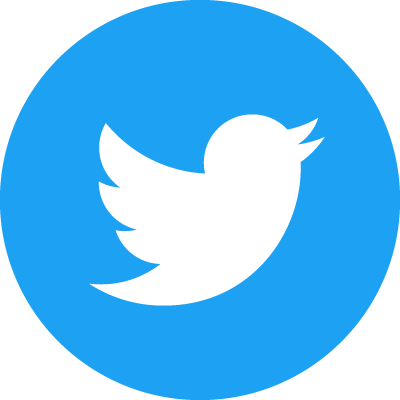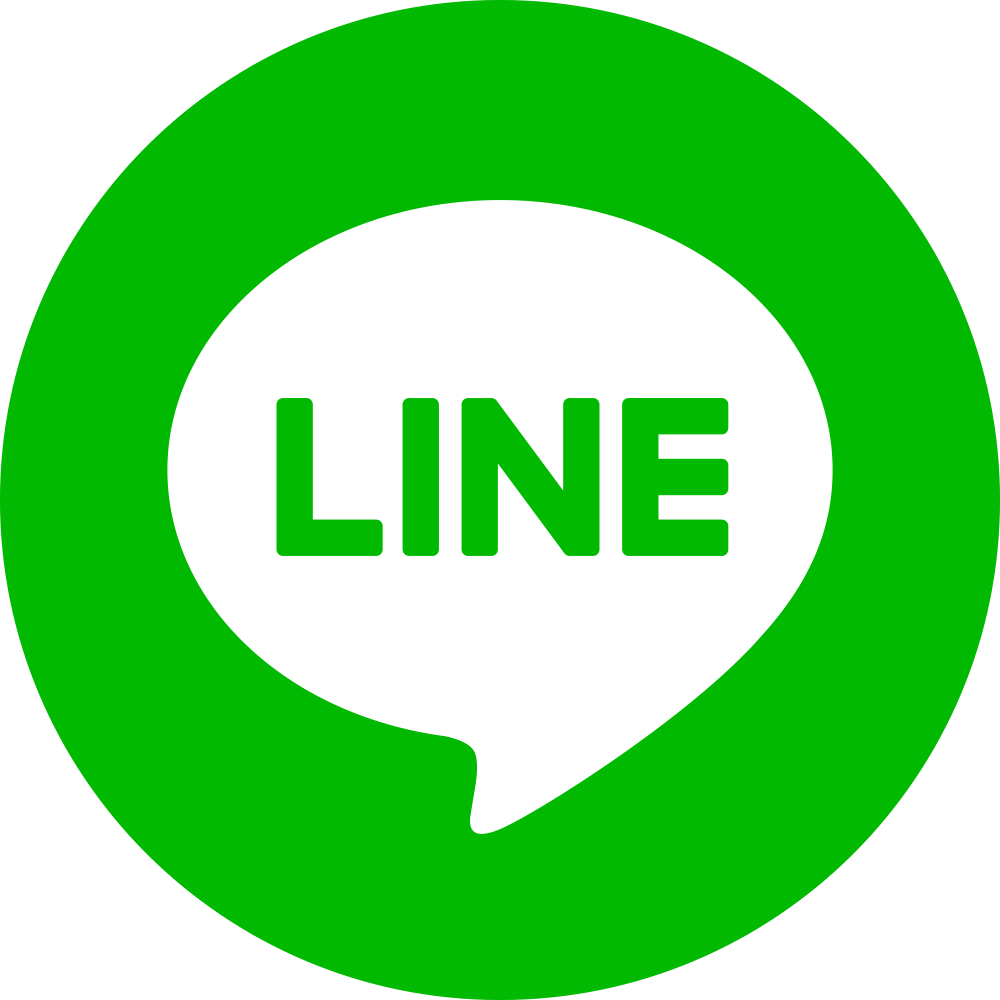- Category:
- All
- Design
- Illustration
- Manga
- Craft
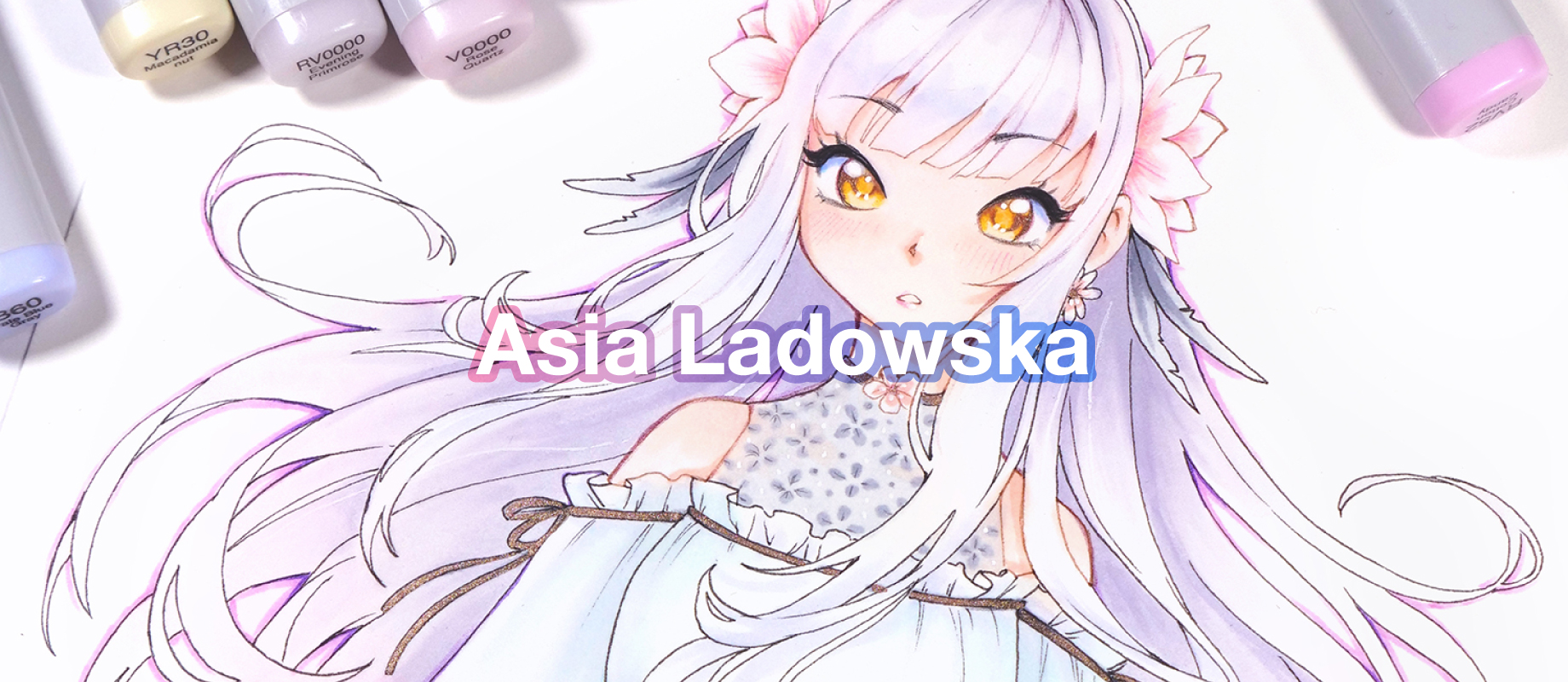
Asia Ladowska
UK-based artist, Asia Ladowska is known for a unique manga-inspired style as result of a lifelong passion for manga and anime. Asia has successfully developed her amazing artistic talent into a career and is now followed by over a million fans on Instagram.
Instagram/Twitter/Facebook
Purchase her video lessons
Purchase her tutorial book Sketch with Asia
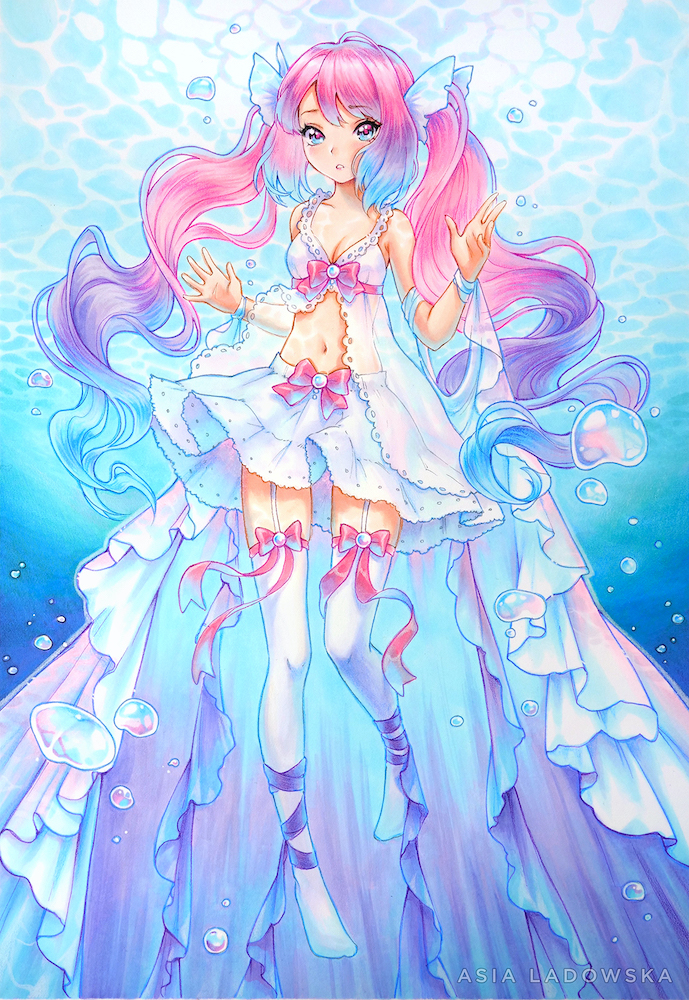
Please tell us a little about your background.
Hello! My name is Asia and I was born in Poland. I create both traditional and digital illustrations that mostly depict female characters inspired by Japanese style of manga and anime.
How did you get into drawing?
Like many kids, I was very keen on drawing and painting, and that interest actually never stopped. I have to admit I was very lucky that my parents spotted this special interest in art early on and encouraged me to apply to art school when I was a teenager and then to study Illustration and Graphic Design at a University.
Why did you decide to become an artist? Who or what specifically inspired you?
I have never made a decision to “become an artist.” Even though it seems like I have been pursuing an art career my entire life, my luck ran out when I moved to study in the UK. I started living on my own and quickly ran out of money, which despite having art exhibitions and winning local art contests - my drawing was not able to help with. I had to drop out of university and start working. I struggled for over five years, changing jobs and trying to pick up studying again, even part-time. Through the university, I was able to apply for a work experience job as a designer, which gave me enough stability and eased everyday stress, and that sparked my love for drawing once again.
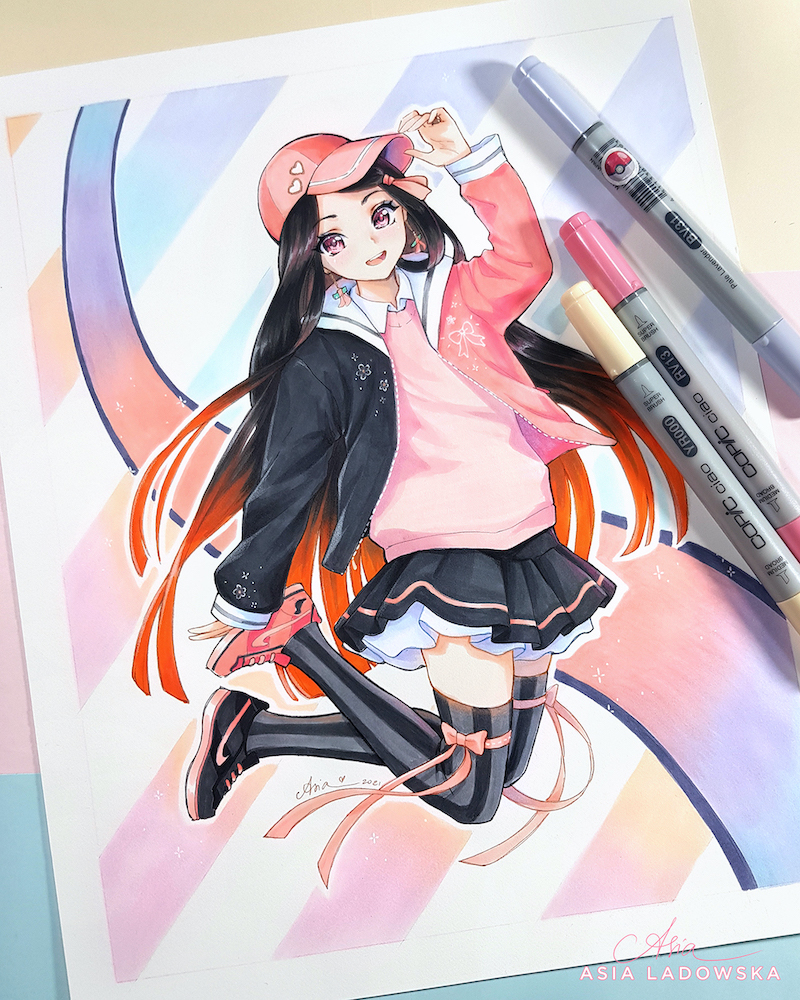
Who or what were your biggest influences?
During the time I was working as a designer, a Russian illustrator that was living in Japan gained popularity online by publishing digital paintings every day. I was enchanted by those paintings. I would stay up until 3am refreshing his tumblr and Deviantart pages waiting for a new illustration to be published. His name is Ilya Kuvshinov and undoubtedly was my biggest art inspiration at that time. His art inspired me to pick up sketching again, so every day I would get to work early and use my free time to sketch. After a few months I also started sketching on the train to and from work. And then on all my lunch breaks… And then also all night long, haha! Drawing made me really happy and gave me something to look forward to every next day.
When did you start working as a professional illustrator?
I think the transition was seamless, and it is really difficult for me to say when it happened. At some point, I was working two full-time jobs - Being a designer during the day, working on illustration commissions at nights - and also finishing University some time in between those two. I only slept between 2 and 3 hours every second day! (I don’t recommend this lifestyle, by the way!)
We’ve heard that you’ve been interested in manga illustration since you were a teenager, but you never got the chance to do it in high school or after moving to the UK, either at an art college or a design company.
Manga illustration is gaining much more popularity these days but when I was in art school 16 years ago, it was very much stigmatized and disrespected. I remember bringing my drawings of Sailor Moon and Pokemon characters to teachers before applying to art school for feedback sessions and I will never forget the words I heard there. The teacher told me: “If you keep drawing like this, you will never get to any art school”. In the eyes of the 14-year-old me, it sounded like a life threat! I never dared to show my manga-inspired illustrations again until I got to the University when I tried again.
I wanted really badly to draw a manga as the main project for my Illustration classes, but when I showed my drawings to the teacher and explained that this is a Japanese-inspired story and this is why the pages are read from right to left, the teacher told me: “You are not in Japan right now. You are in the UK, and we read books from left to right.” I was never given help or support for my projects; I was always told to change what I am doing to “more European style” editorial illustration. I was very stubborn and carried my project until the end but received really bad grades as a result. I really wish and hope that the times have changed, and schools are not the same, but we would have to ask the younger students about that! Regarding my designer job, drawing was not a part of it at all, I worked mainly with photography, typography, and web design which did not require any illustration skills.
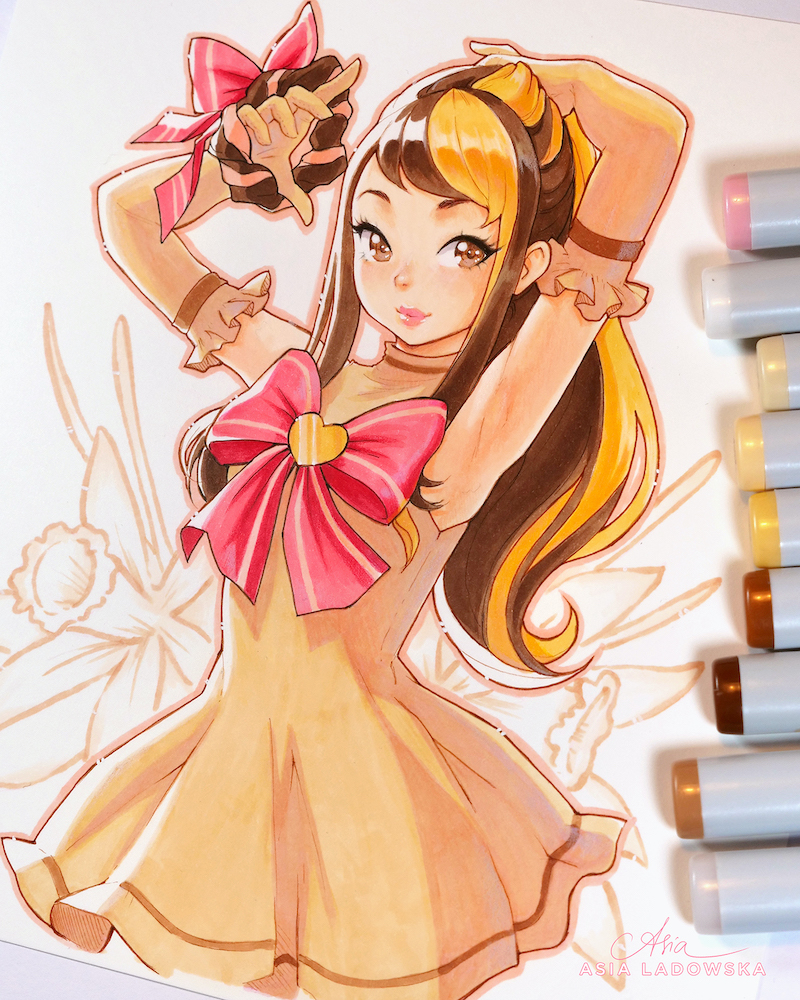
You’ve quit your job at a design company and became very popular as a full-time illustrator. Did you have any hesitation in abandoning a promising career and choosing to become a manga illustrator?
Oh yes, I hesitated until the last moment! I was publishing my illustrations online and working on commissions at nights, but the income was not enough to support me financially to quit my job. I was getting more and more exhausted from the lack of sleep, and I was losing motivation at work to the point I was not performing very well. I requested a meeting with my manager and explained how I was feeling that I was burning out and that I would like to ask for an unpaid break, but if possible - without quitting the job. I asked for a 6-month long sabbatical leave because this is how much money I managed to save up for my rent in advance. The company agreed, and I had planned to catch up on sleep, go to Japan for a 3-week-long holiday to get some art inspiration, and try doing illustration full time - and if it doesn’t work out - go back to work after six months. Only after that time - I hand in my resignation letter! This really shows how frightened and insecure I was about quitting my job 🙂
What is the appeal of manga illustration for you?
It is difficult to explain the feeling of love and why it happens… It just happens, haha! But let me try. I absolutely adore manga illustrations for their lines, simplicity, and complexity. At the same time, I adore its beautiful, vibrant, and toned colors, and the way some illustrators depict hair and fabrics with weightlessness. They always look so ethereal and flowy! Manga art depicts reality in a different light, one that is very comforting and pleasant to look at.
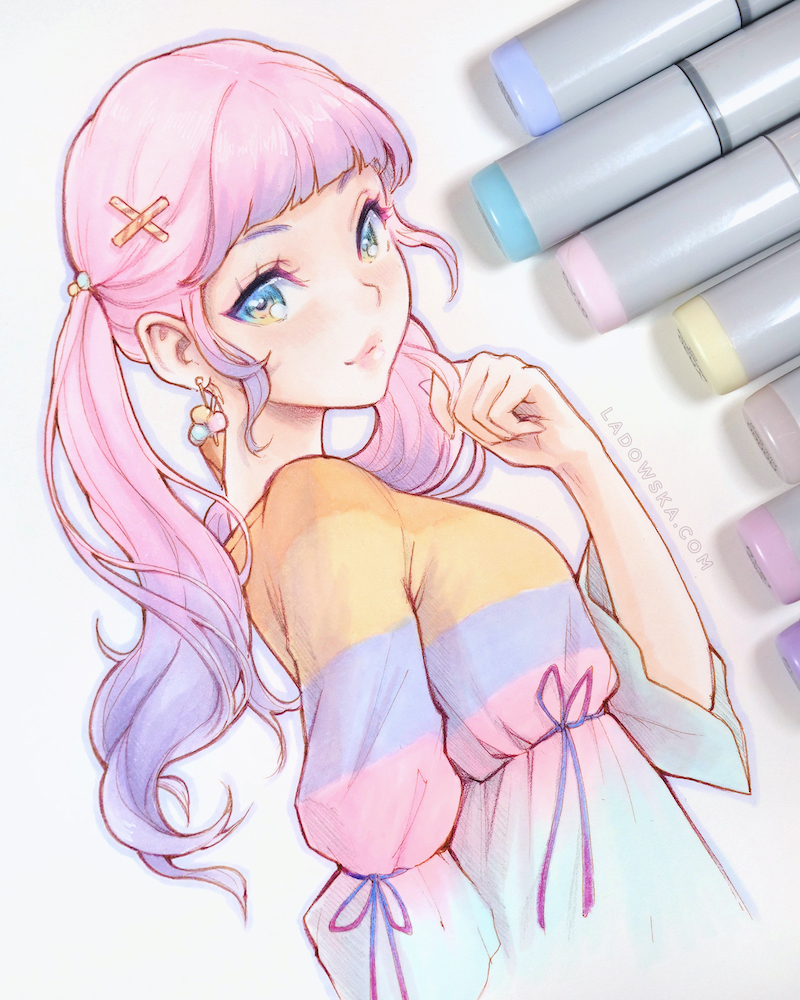
You are a popular artist with over a million followers on Instagram. What are your thoughts on the impact of social media on artists?
I think social media has a huge impact on artists these days! It can be both positive and negative, however. Before gaining popularity on social media, I simply was not able to pursue art as a career. It has opened many doors and opportunities for me. Social media has introduced me to the art of Ilya, later many other artists that influenced my style, artists that are now my friends, and even introduced me to Copic Markers and helped my illustrations reach your eyes and meet up with the Copic team in Japan. This is an incredibly huge power that transcends the borders of countries and even continents. But it also comes at a high price.
Social media creates pressure on artists to keep creating more and faster just to be present online or disappear buried in the algorithms. It is hard to gain visibility because people post a lot and have a very short attention span. To top all that, I think that for the younger audience it creates a “fake” image of success, that you have to gain thousands of likes and followers to be successful, driving younger people into depression and a “chase” of gaining likes and followers, while they don’t really mean anything. Posting illustrations online is not a career, but to do it successfully one has to have a mindset of a businessperson. It’s a powerful marketing tool and a network for contacts with friends, clients, and businesses around the world, but there is absolutely no income from posting images on social media. To make a career out of it, one has to think about possible income sources and then promote those - on social media platforms. Whether it’s selling prints or self-publishing books or selling online art courses, those things need to be made first and then sold via platforms designed for trading.

Recently, you published your first instruction book, Sketch with Asia. Could you describe this book?
In the book, the reader can follow my art journey from the beginning, seeing my change and improvement in the drawing. I included as many tips as I could think of to help budding artists overcome the common hurdles that are a part of every artist’s world - like how to overcome art block or the lack of progress. There are beginner-friendly tutorials and exercises for artists of more advanced levels too. “Sketch with Asia - Manga Inspired Illustrations and Tutorials by Asia Ladowska'' is a book that was published in 2019 by 3dtotal and also includes many of my original illustrations created before that year.
When did you first start using Copic markers and what made you decide to use them?
I created my first Copic illustration in 2016 using a set of 5 pastel colors of Copic Ciao markers. I have learned about those markers from other artists on Instagram! A few months later, I sold my first illustrations online and did my first commissions using those 5 markers, and was able to buy more Copic colors with the money I earned. I remember being really proud and happy about that achievement 🙂
What is your favorite type of Copic marker? Are there any specific colors you routinely use?
I use Copic Ciao and Copic Sketch markers because of their soft nibs. I really love the effects that can be made using this nib and the soft blending that I can achieve. The most often used markers for me are: R000, R000, R00, R20, E0000, RV00, B60, BV21,BV23, BV25 and BV29. I try to draw using different colors and color palettes, but the favorites remain the same.
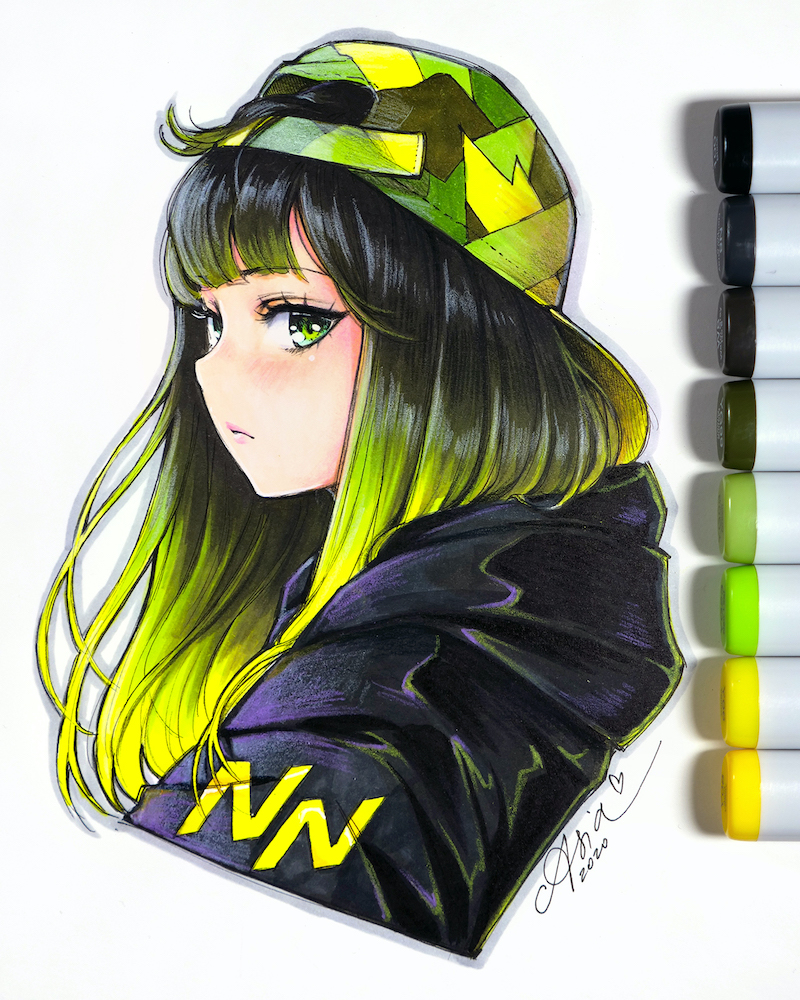
The beauty of your works and your skills in Copic markers is remarkable, and we’re sure you have deep knowledge of how to use Copic. Do you have any unique tips or tricks you could share with Copic fans?
Thank you for those kind words! It really means a lot. I have to admit that even after six years of using Copic markers, I continue to learn and discover new techniques and tricks. To share some of them:
・I like using colors throughout illustration from lightest to darkest - Alcohol markers tend to pick up other colors from paper. So, to avoid dirty colors and smudges, I leave the darkest colors for the end.
・For less rendered artworks and fast sketches I like using thinner paper and sketchbooks which stop me from adding too much ink and over blending many colors (when you add too much - ink starts bleeding around!), while for detailed illustrations I always use smooth hot-pressed watercolor paper, which is thick and lets me play, experiment and layer many colors creating interesting results!
・Mix different media for your own benefit! Markers can only do as much… I have learned to mix pencils, colored pencils, and Multiliner pens together to draw elements like eyelashes or single hair strands, which would be pretty hard to do with markers only!
・Many colors can easily get overwhelming and sometimes hard to choose! I like to intentionally limit my color palettes to a few colors - not to feel overwhelmed, or even pull out three random colors and create something with them as a challenge!
・Copic marker 0 - which is a Colorless Blender - works better as an eraser (for example, when something accidentally bleeds over the line!), and for blending, I use lighter shades of the colors that I want to blend 🙂
Could we have your message or advice for young Copic fans who want to become an illustrator?
Draw what you love and follow your heart. Do not compare yourself to others as we are all different and unique. We also learn at a different pace and like different things! Don’t be afraid to try out new things and techniques; they are really fun to explore and learn. Oh, and don’t wait for “more free time” to draw - when you are busy trying to find small moments for quick drawing and sketches as in the end they add up! Ten minutes a day adds up to more than an hour in a week. That’s plenty of time for a full Copic illustration 🙂
Thank you! We hope for your growing success in the future.
Thank you for the opportunity and the interview. I hope it will inspire artists to pursue doing what they love and to never give up!


